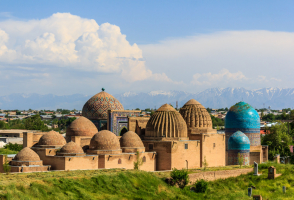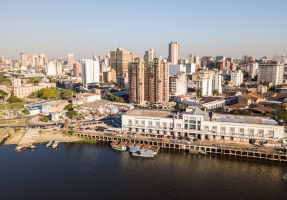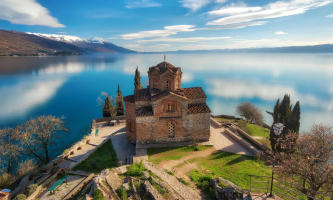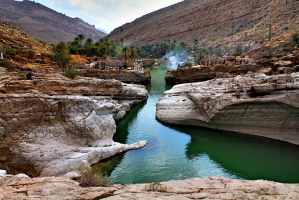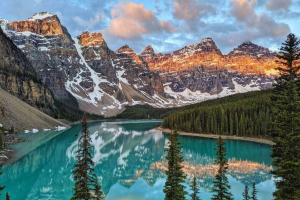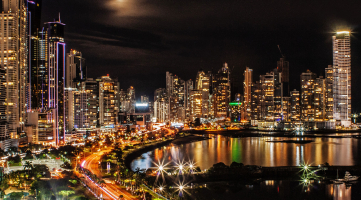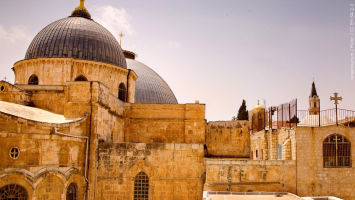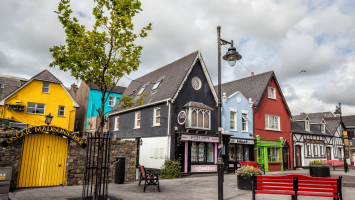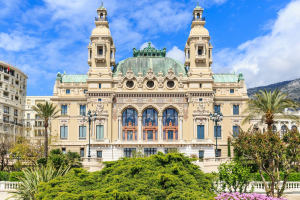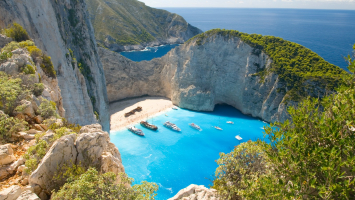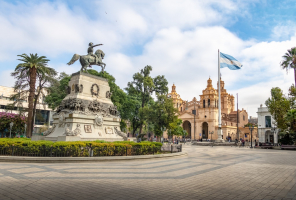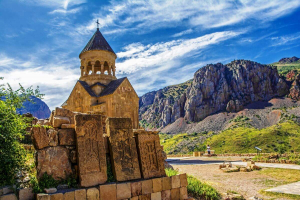Top 10 Reasons Why You Should Visit Zadar, Croatia
There are so many beautiful cities in Croatia that it might be tough to decide which ones to visit. Zadar is one of those cities that should not be overlooked ... read more...and should be at the top of your list. It has historical structures, modern monuments, and beautiful vistas. It has the most seamless combination of ancient and contemporary in Croatia, which is one of the many reasons you should go. And in the next sections, we'll go over the additional reasons why Zadar should be your next trip!
-
If you want to explore the region of Northern Dalmatia, Zadar is the perfect place to stay. It's a lovely city around an hour from some of Croatia's most well-known national and natural parks, ancient cities, and extensive islands. Zadar is breathtakingly beautiful and near to Nin, Pag, Ibenik, Split, Plitvice Lakes, Krka National Park, Paklenica National Park, and Kornati National Park. It has a highly rich past, with pre-Romanesque architecture, one-of-a-kind contemporary monuments, and an ancient town on a peninsula. This city is a good starting place for seeing the unspoilt beauty of Croatia's extensive parks or going on a slalom ride between small Kornati islets.
Zadar, Croatia may not be for everyone, but if you want to explore gorgeous Croatia without the crowds, this is the right place for you. An experience you won't find in any other city in Croatia. Zadar isn't exactly the type of sight you'd put on a postcard, but the experience you'll have is one you'll remember forever. Today, Zadar is a historical hub of Dalmatia, as well as the main political, cultural, economic, industrial, educational, and transportation center for Zadar County. Zadar is also the episcopal see of the Zadar Archdiocese. Because of its rich tradition, Zadar is now one of the most popular Croatian tourist attractions, having been dubbed "the Adriatic's entertainment center" by The Times and "Croatia's new capital of cool" by The Guardian. In 2017, UNESCO included the fortified city of Zadar to the list of World Heritage Sites as part of Venetian Works of Defence between the 15th and 17th centuries: Stato da Terra - western Stato da Mar.
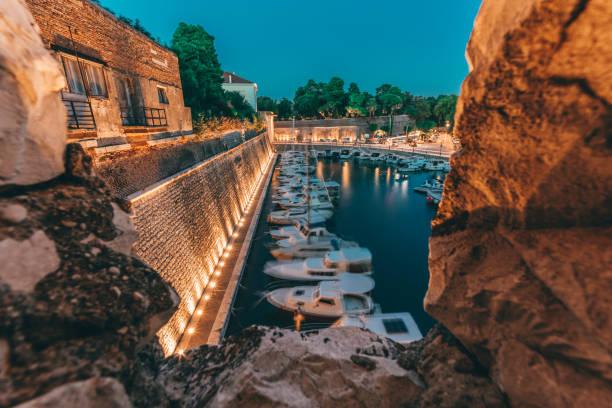
istockphoto 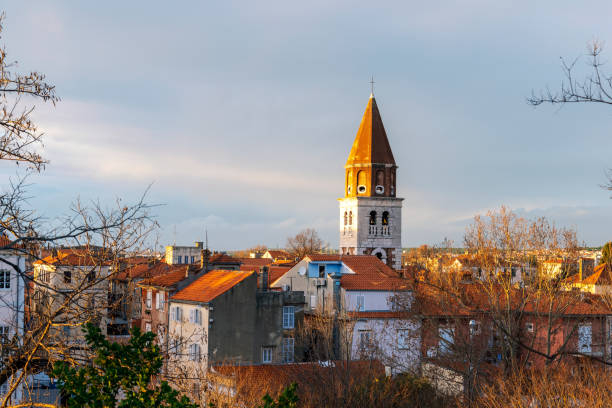
istockphoto -
The Land Gate, which marks the formal entrance into Zadar Old Town, is one of the city's oldest monuments. It was initially constructed in the 16th century to serve as the major entryway into Zadar. It is not required to enter the Old Town through the magnificent gate, although it is highly recommended. Especially with so many intriguing things nearby - both Five Wells Square and Queen Jelena Madijevka Park are located near the Land Gate and are well worth a visit.
What makes Zadar Old Town unique is that it is located on a higher elevation than the rest of the city. The main plaza (forum) was created at the western end of town, and near to it was a heightened capital and temple. The economic plaza - emporia - was built in the region facing the sea. It is thought that there was also an amphitheater in the Roman Zadar region for the preservation of deadly gladiator bouts, as well as a theater for the production of stage events. You'll notice this once you start wandering about and realize how many stairs you're actually ascending, especially if you want to view some of the things near the Old Town walls. But don't be afraid of the steps; the uphill treks are always worthwhile since they reward you with breathtaking vistas. So don't forget to bring your camera!
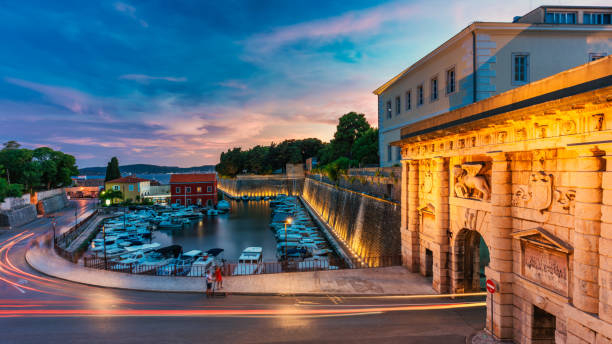
istockphoto 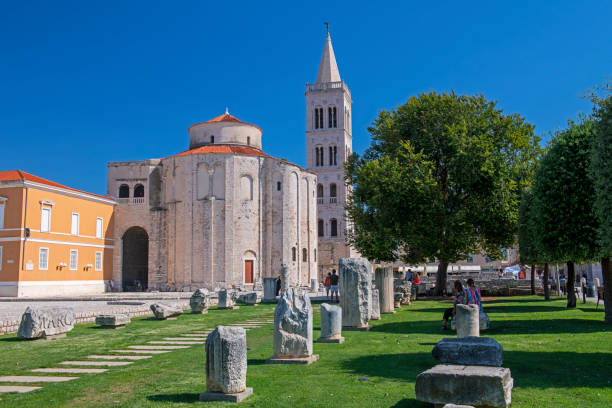
istockphoto -
Zadar's narrative begins with the historic Roman Forum in the Old Town, just off Kalelarga. Zadar has a 3,000-year history, having first been attested as a community in written sources and historical artifacts. It became a fully urbanized center during ancient Roman times and remained so for the next two millennia. Today, coffee-obsessed Croats congregate at cafés beneath St. Anastasia's Cathedral's bell tower. And families sit on the steps of St. Donatus Church, which dates from the ninth century.
St. Donatus holds classical performances in the summer because its domed ceiling functions as a natural amplifier. Visit the shoreline to witness the remnants of the 6th century earthquake that destroyed the city. Roman columns, colonnades, pediments, and sarcophagi are arranged on a lawn like an impossible jigsaw puzzle. Zadar has been one of the most prominent cities on the Eastern Adriatic coast from those early records, and an unavoidable destination for explorers, poets, and authors. Every step you take reveals the antiquity and continuity of its streets, squares, beachfront, cathedrals, and historic history, while innovative installations demonstrate the vision of modernity and inspire new visitors. The experience began three thousand years ago, when the foundations were constructed.
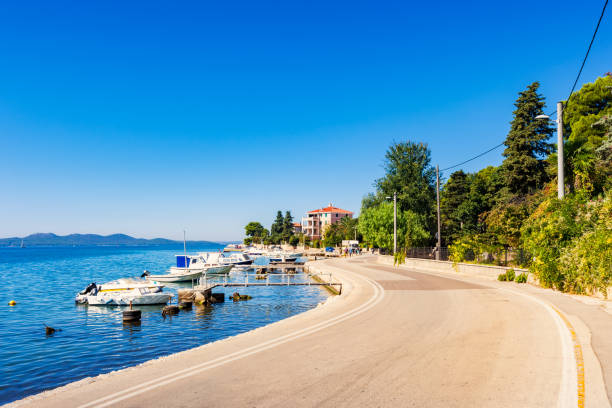
istockphoto 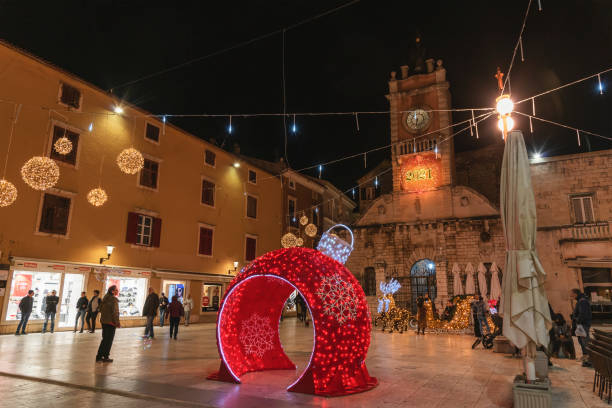
istockphoto -
Glass blowing is an old skill that has been practiced for millennia. It is the technique of utilizing a blowpipe to shape molten glass into desired forms. Although it may appear to be a difficult process, blowing glass is actually relatively simple and can be accomplished at home with the correct equipment and supplies. With enough practice, you'll be able to make gorgeous and one-of-a-kind works of art.
Almost all glassblowers in Croatia have gone out of business. The Museum of Ancient Glass in Zadar, however, houses the very last one. Explore the collection of historical artifacts. Climb to the second level to see glassblower Marko Stefanac at work in front of a 1,300°C furnace. Gaze in awe as he turns white hot glass into vases, jugs, and mementos. Glass blowing can be attempted by brave folks. However, keep in mind that the ultimate outcome may differ from Marko's.
A museum dedicated to ancient glass? Indeed, excavations at several Roman graves in and around Zadar discovered such a wealth of glass artefacts that they were deemed worthy of their own museum, which opened in 2006. It is a big museum housed in the lovely Cosmacendi Palace, a 19th century palace. Exhibits are well-lit and professionally labeled, and they describe the chemistry of glassmaking as well as its history and technological progress from prehistory to the Roman era (and beyond). Many galleries exhibit specimens of glass pieces from the Zadar excavations, emphasizing various methods as well as the pure beauty of the artifacts. The glass-blowing studio, where old skills are shown multiple times every day, is a particular feature.

istockphoto 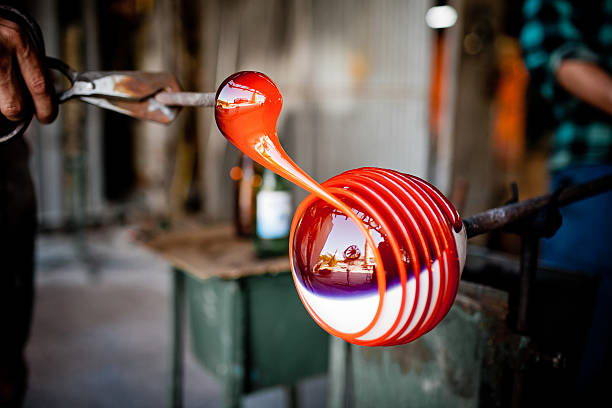
istockphoto -
Walking along the Zadar shoreline before nightfall from Foa to the remarkable modern installations, the Sea Organ and the Greeting to the Sun, provides an unparalleled experience of the world's most spectacular sunset. Feeling Zadar is experiencing it with all of your senses. It entails strolling through the towering witnesses of its ancient history and the ruins of time, as well as absorbing its day and night rhythms amid the small side-alleys and expansive squares. Then unwind at one of the numerous colorful cafés, soaking up the Mediterranean and Dalmatian relaxed moods. Zadar, though, is much more than that.
Perfect and crystal-clear saltwater, whose addictive salinity is an endless and vital source of life's vitality, is softly blended with Foa and its UNESCO World Heritage Site town walls. When a gentle breeze from the south or a rosemary-soap like scented and delightful summer landward wind blows up, the soaked shore softly sings in its honor, reflecting the sun's shine on the surface of the water.
While the Sea Organ, a well-known stepped installation on the beach, plays to the beat of that undulating ecstasy, the astronomical and calendar Greeting to the Sun dances with its light, greeting tourists and those who gaze in envy at this remarkable sight. Zadar has a history dating back at least three thousand years. An Adriatic jewel whose name does not fade with time, and whose popularity was increased by Alfred Hitchcock, who appreciated the most magnificent sunset in the world while blowing off the smoke from his Habanos from the Zadar shoreline.
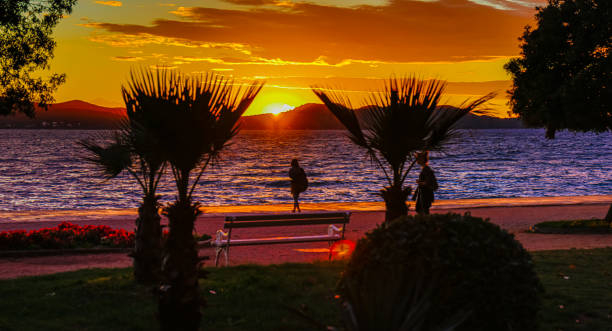
istockphoto 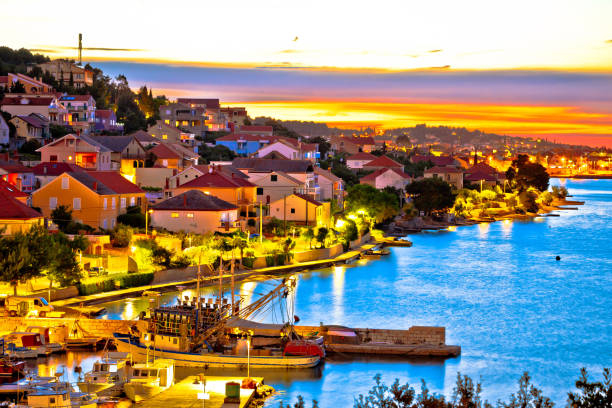
istockphoto -
Two amazing natural treasures may be found in the Northern Dalmatian hinterland. Plitvice Lakes National Park is the most well-known, with its panorama of terraced lakes, tiered waterfalls, and brilliant cascades. The main tourist attraction of Plitvice is Veliki Slap, Croatia's tallest waterfall. So, travel between June and August to avoid coach trips from Split. The Park is great for the adventurous; there are various difficult hiking paths, and climbing is also popular here. There are also more easy hikes available for those who like things a little more laid-back, with just as much to explore.
There are a variety of caverns of varied sizes in the National Park, one of which you may visit. The Park is well-known for its varied geological features, as well as a diverse range of plant and animal species. Various varieties of birds may be seen among the park's biodiversity (including falcons, eagles and owls). Deer, bears, foxes, wild cats, and lynx are also present.
Paklenica National Park near Starigrad, about an hour's drive east of Zadar, is a UNESCO World Biosphere Reserve. It is also a popular destination for bouldering, climbing, rafting, and extreme mountain riding. Off-road trips from Starigrad to mountain farms for lunch are organized by Velebit Photo Safari. They also provide visits to the Zrmanja River Canyon. Don't be startled by the rugged terrain. This region has more than doubled for the American West. In addition, the legendary German series Winnetou was filmed here.
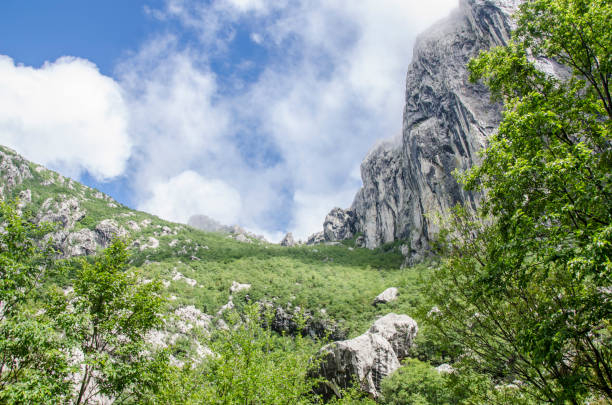
istockphoto 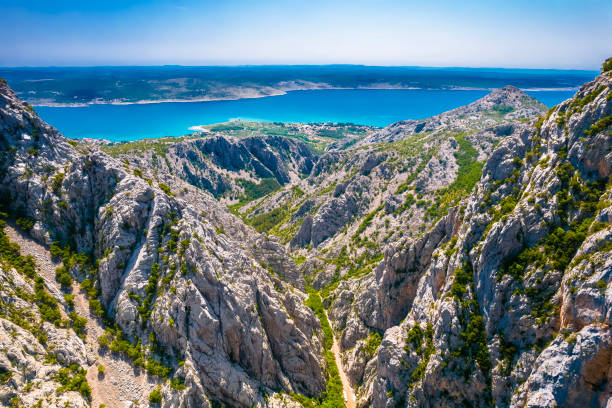
istockphoto -
Apart from being a delicious and satisfying dish rich of Mediterranean smells and flavors, Paticada also represents the culinary heritage of this region. This culinary treasure has traveled through time to be a part of our celebratory table today, and it also attests to the historical link of the people along the Adriatic, the Italians on one side and the Croats and their Illyrian forefathers on the other.
For four centuries, Zadar and Dalmatia were part of the Venetian Republic, and as testimony of time, there remained, among other cultural items, several meals and gastronomic customs that are practically similar on the eastern and western sides of the Adriatic Sea. Paticada, as in Zadar, the Venetian Dalmatian capital for centuries, is a specialty in Italy, more specifically in the province of Veneto, in Verona and Venice. Unlike the Dalmatian Paticada, which is usually cooked with beef, the Venetian Paticada is made using horse flesh (Pastissada de caval).
Another feature is bluefin tuna, which is produced responsibly near Ugljan Island. Indeed, the local tuna is so well-known that planeloads of fish are often carried to Tokyo. Do you want some wine? Pay a visit to Kraljevski Vinogradi. Then, with a glass of dazzlingly gold pošip, enjoy the remainder of the day's sun. Don't stay too long. Maraschino, the native cherry liqueur, awaits you in the pubs of Zadar's Old Town. Order it over ice and straight up.

istockphoto 
istockphoto -
The majority of locations in Northern Dalmatia are easily accessible. Those that require more work are also worthwhile. Kornati National Park, a remote maritime reserve south of Zadar. Visit to observe dolphins, lizards, ring snakes, and approximately 70 different butterfly species. In the summer, take a boat excursion around the park's reef and sunbathe on its shingly coves and reefs.
Several city beaches around the city, transforming it into an outdoor bathhouse. The Kolovare beach, with its bays and city saltwater pool, is only a few steps from the city center, while the Zadar coastline, famed for its beauty and purity, is not only a popular promenade and bathing location for the youth. The trail from Kolovare goes to the rocky beach of Punta Bajlo, while the route towards Puntamika leads to the pebble and sandy beach of Borik. Borik has an aquapark and beach bars, and the entire Diklo coastline is swimming friendly. Vitrenjak is a beach with a playground for children that is backed by a marina.
The lovely suburban village of Petrane is adorned with several pebble, sandy, and concrete beaches backed by shadow-casting trees, as well as extra amusement amenities. The almost 5-kilometer-long shallow areas of the shoreline are good for youngsters, while the steeper and deeper parts are better suited for individuals seeking more dramatic fun in the clear water.
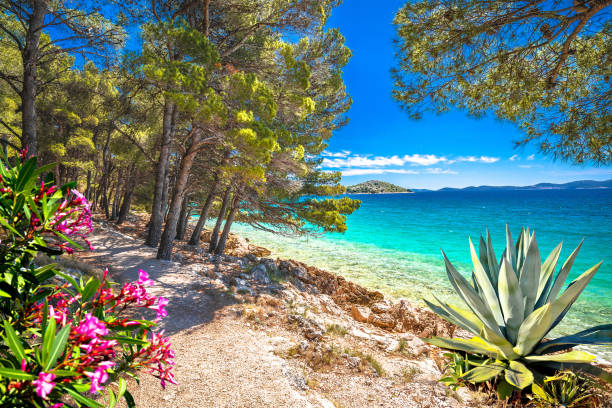
istockphoto 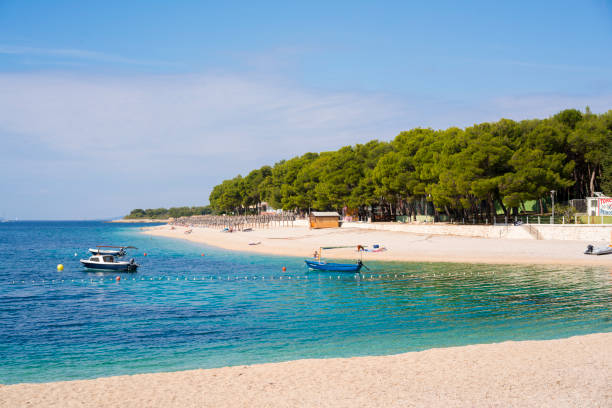
istockphoto -
You'll come face to face with something absolutely unusual right next to the sunset-'Salutation lovers to the Sun'. You'll have the chance to totally immerse yourself in the captivating melodies and magnificent sounds generated by the Sea Organ. The installation, which is framed by a stone stairway of beautifully carved concrete steps, is outfitted with underwater pipes that force yearning gusts of air through the system and, when submerged in water, broadcast a plethora of musical notes.
This structural arrangement provides a 'harmonica effect,' resulting in an internal symphony of relaxing tones. As ferries or boats pass by, the volume really rises. It doesn't strike you as very enthralling visually. However, if you take a seat on the stairs and listen carefully, you will become immersed in the sea's melody. And, on that point, you'll never hear the same sound twice. To say the least, the juxtaposition of the cold, concrete shoreline and the titillating tones of the sea creates a remarkable, unique experience.mIf you don't mind other people's talk and cheer, sunset is your next best bet.
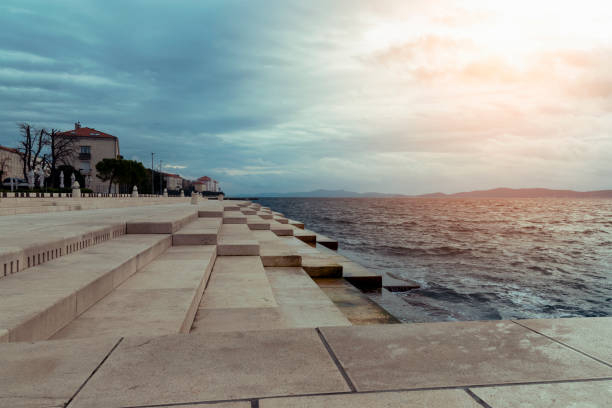
istockphoto 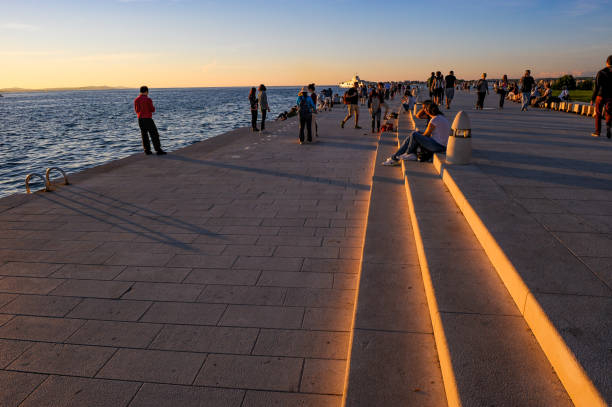
istockphoto -
A 22-metre circle-shaped disc stacked with over 300 solar glass panels sits on the crystal blue shoreline. The 'Salutation to the Sun,' an art project, gathers the sun's energy by soaking up the solar beams. Even more, it'll amaze you, especially around dawn, when the massive disc lights up, putting on a colorful and energetic light display. Some say it looks like a disco floor from the 1970s, while others love it for its rainbow radiance. Keep an eye out for the details; you'll be astonished at what you might discover here. Hint: there are even tiny discs depicting distant planets in our solar system.
If you want to have this place completely to yourself, go early in the morning. Make your way here for sunset if you want a taste of the joyful, artsy environment on offer. On a side note, there are now plans to renovate the 'Sun Salutation' to make it more interactive for tourists. So, who knows, maybe there may be more the next time you arrive.
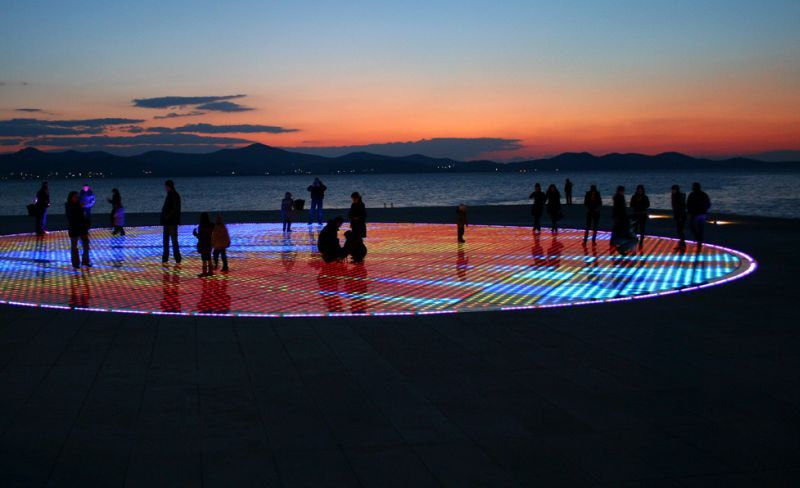
istockphoto 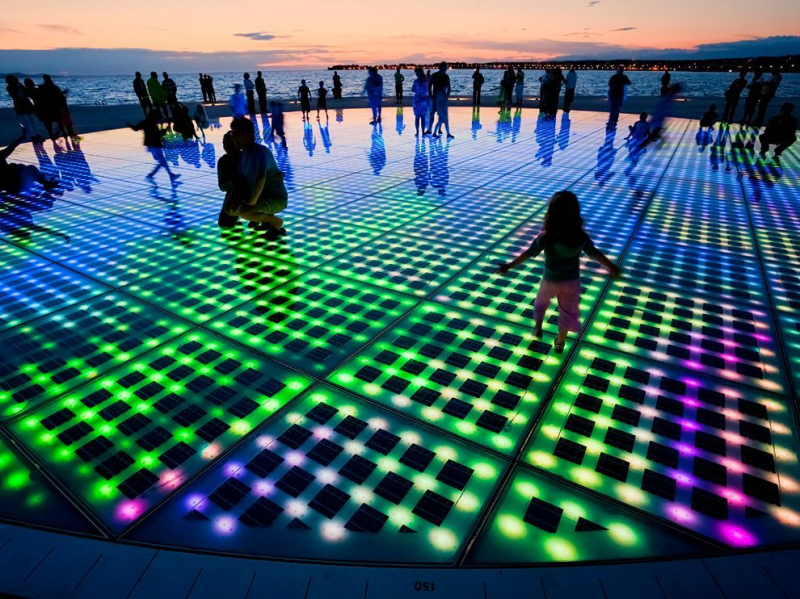
istockphoto












